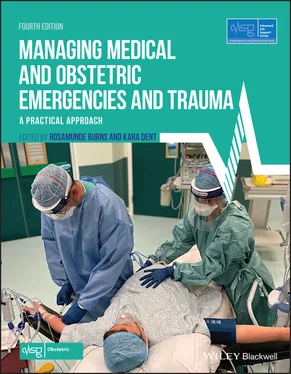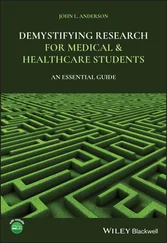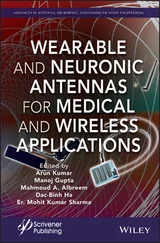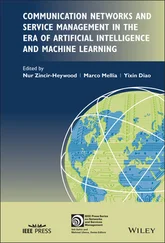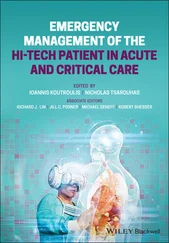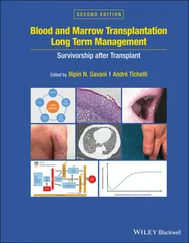1 ...8 9 10 12 13 14 ...28 The value of individualised care also needs to be emphasised. The 2006–2008 report stresses that vulnerable women, for example those with a learning disability, may not be able to follow instructions about self‐injection and will require particular care.
Chest symptoms (shortness of breath or discomfort/pain), ‘panic attacks’ or leg pains appearing for the first time in pregnancy or the puerperium need careful assessment, particularly in at‐risk women. This lesson needs to get across to other specialties.
Deaths from ectopic pregnancies still show no sign of falling. Atypical presentation is common and the CEMD has repeatedly drawn attention to gastrointestinal symptoms that may mimic food poisoning. The 2019 report recommended that all women of reproductive age presenting to an emergency department with collapse, dizziness, abdominal or pelvic pain or gastrointestinal symptoms (including vomiting and diarrhoea) should have a pregnancy test. Women from ethnic minorities are over‐represented among deaths from ectopic pregnancy, possibly because of communication difficulties.
The Abortion Act of 1967 eliminated deaths from criminal abortion, which in the 1950s caused about 30 deaths a year. In the 2019 report one woman died from complications associated with a self‐induced termination of pregnancy. Previous deaths from termination have included women who received high doses of uterotonics in the presence of a CS scar and those who have developed sepsis, and hence prophylactic antibiotics are recommended in RCOG guidelines. Haemorrhage after spontaneous miscarriage has accounted for previous deaths, especially in the mid‐trimester, and is associated with a placenta implanted over a CS scar. This again emphasises the importance of placental localisation.
The number of deaths from amniotic fluid embolism has remained constant for 30 years. The condition is not always fatal, and useful information may be gained when the woman survives. All cases, whether fatal or not, should be reported to the UK Obstetric Surveillance System (UKOSS) at the National Perinatal Epidemiology Unit in Oxford.
Most recently the CEMD has highlighted the dangers of hyperstimulation of the uterus as a cause of amniotic fluid embolism and in particular the excessive use of misoprostol for induction with intrauterine deaths. In terms of responding to collapse in the peripartum period (which is how women with this condition present), the take home messages, in addition to rapid response and resuscitation, are of anticipating the massive haemorrhage which will follow and putting out a major obstetric haemorrhage (MOH) call.
In 1982–1984, there were only nine deaths from this cause and none was due to puerperal sepsis. Deaths from sepsis subsequently rose steadily. In 2006–2008 it became the leading direct cause of maternal death with 26 deaths. Thirteen of these were due to the group A beta‐haemolytic Streptococcus ( S. pyogenes ), compared with four in 2016–2018. Among a total of 10 women who died from genital tract sepsis in 2016–2018, six died after mid‐trimester chorioamnionitis from Escherichia coli ; three of these six women had preterm pre‐labour rupture of the membranes. This highlights the high‐risk nature of mid‐trimester rupture of membranes, and the 2020 report emphasises the importance of early senior involvement in the care of women with extremely preterm pre‐labour rupture of membranes and a full explanation of the risks and benefits of continuing the pregnancy.
Sepsis is often insidious in onset and can progress very quickly. If it is suspected, urgent referral to hospital is necessary. In hospital, high‐dose broad‐spectrum antibiotics should be started immediately, without waiting for the results of investigations. In 2012, in response to the rise in deaths, the RCOG published new guidelines on bacterial sepsis during and after pregnancy.
Sepsis due to respiratory causes remains a leading cause of death during or after pregnancy, as was evident in the 2009 AH1N1 influenza pandemic, and the covid‐19 pandemic has highlighted this once again. Over the first wave of the covid‐19 pandemic in the UK, 10 women died with SARS‐CoV‐2 infection, of whom eight died from complications of covid‐19. A rapid report from MBRRACE‐UK ( Saving Lifes, Improving Mothers’ Care Rapid Report: Learning from SARS‐CoV‐2‐related and associated maternal deaths in the UK March–May 2020 ) noted that the severity of women’s illnesses was often not recognised until they were in extremis, and emphasised the importance of multidisciplinary team care and obstetric leadership with daily review. This is essential in order to ensure timely recognition of deterioration, early assessment of the need for iatrogenic birth to help respiratory function and identification of postnatal complications.
It is also important to remember that deaths from influenza continue to occur despite widespread availability of vaccination. With immunisation rates in pregnancy at less than 50%, influenza remains a threat and influenza swabs should still be taken in women presenting with severe upper respiratory tract infections, with antiviral treatments commenced until results exclude it.
Deaths from anaesthesia fell steadily during the 1970s due to a move to regional anaesthesia and better training of anaesthetists. Since 1985, the number has been in single figures in each triennium and in view of the rising CS rate this represents an improvement. Failed tracheal intubation has been highlighted in recent years, together with anaphylaxis and aspiration causing difficult ventilation. The most recent report emphasised the crucial role of the anaesthetist in the resuscitation, management and postoperative care of women who have obstetric haemorrhage. Particular messages included: (i) the importance of ensuring adequate intravenous access to facilitate fluid resuscitation; (ii) the need to use appropriate rapid fluid warming devices during fluid resuscitation and transfusion; and (iii) the importance of ensuring that there is evidence that there has been adequate resuscitation of a woman who has had an obstetric haemorrhage and that the haemorrhage has ceased prior to extubation.
Indirect deaths have outnumbered direct deaths in the UK since 1994–1996 ( Table 2.4). In that triennium, birth and death registrations were linked by the ONS, leading to better ascertainment.
Table 2.4 The rise in indirect deaths: maternal deaths notified to the CEMD, 1991–2018
|
1991–1993 |
1994–1996 |
1997–1999 |
2000–2002 |
2003–2005 |
2006–2008 |
2009–2011 |
2010–2012 |
2016–2018 |
| Direct |
129 |
134 |
106 |
106 |
132 |
107 |
83 |
78 |
92 * |
| Indirect |
100 |
134 |
136 |
155 |
163 |
154 |
170 |
165 |
125 |
| Total |
229 |
268 |
242 |
261 |
295 |
261 |
253 |
243 |
217 |
*Suicides are included in the classification of direct maternal deaths after a change in World Health Organization guidance.
From 2000–2002 onwards, CEMACH regional managers were involved in collecting data and this improved ascertainment further. Better identification of cases, however, is only one reason for the rise in indirect deaths, the other being a rise in risk factors such as smoking, obesity and older age at childbearing.
Читать дальше
